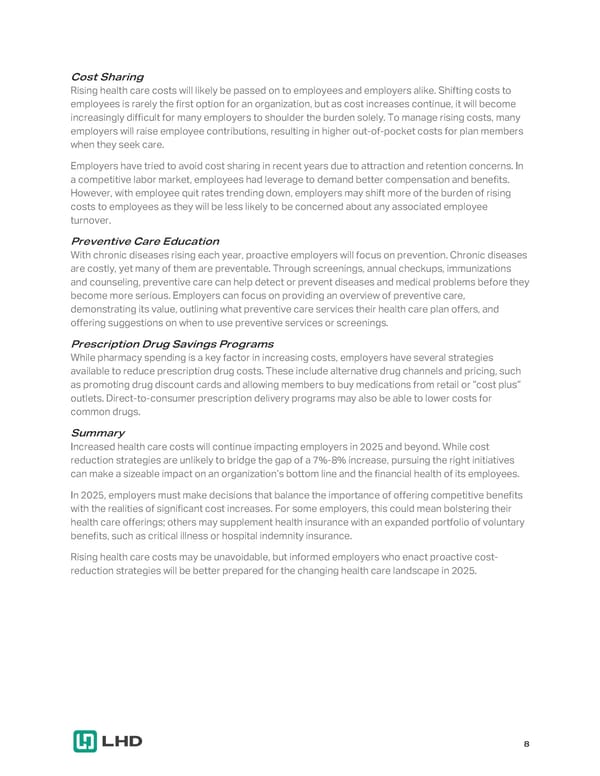Cost Sharing Rising health care costs will likely be passed on to employees and employers alike. Shifting costs to employees is rarely the first option for an organization, but as cost increases continue, it will become increasingly difficult for many employers to shoulder the burden solely. To manage rising costs, many employers will raise employee contributions, resulting in higher out-of-pocket costs for plan members when they seek care. Employers have tried to avoid cost sharing in recent years due to attraction and retention concerns. In a competitive labor market, employees had leverage to demand better compensation and benefits. However, with employee quit rates trending down, employers may shift more of the burden of rising costs to employees as they will be less likely to be concerned about any associated employee turnover. Preventive Care Education With chronic diseases rising each year, proactive employers will focus on prevention. Chronic diseases are costly, yet many of them are preventable. Through screenings, annual checkups, immunizations and counseling, preventive care can help detect or prevent diseases and medical problems before they become more serious. Employers can focus on providing an overview of preventive care, demonstrating its value, outlining what preventive care services their health care plan offers, and offering suggestions on when to use preventive services or screenings. Prescription Drug Savings Programs While pharmacy spending is a key factor in increasing costs, employers have several strategies available to reduce prescription drug costs. These include alternative drug channels and pricing, such as promoting drug discount cards and allowing members to buy medications from retail or “cost plus” outlets. Direct-to-consumer prescription delivery programs may also be able to lower costs for common drugs. Summary Increased health care costs will continue impacting employers in 2025 and beyond. While cost reduction strategies are unlikely to bridge the gap of a 7%-8% increase, pursuing the right initiatives can make a sizeable impact on an organization’s bottom line and the financial health of its employees. In 2025, employers must make decisions that balance the importance of offering competitive benefits with the realities of significant cost increases. For some employers, this could mean bolstering their health care offerings; others may supplement health insurance with an expanded portfolio of voluntary benefits, such as critical illness or hospital indemnity insurance. Rising health care costs may be unavoidable, but informed employers who enact proactive cost- reduction strategies will be better prepared for the changing health care landscape in 2025. 8
 2025 Employee Benefits Market Outlook Page 7 Page 9
2025 Employee Benefits Market Outlook Page 7 Page 9